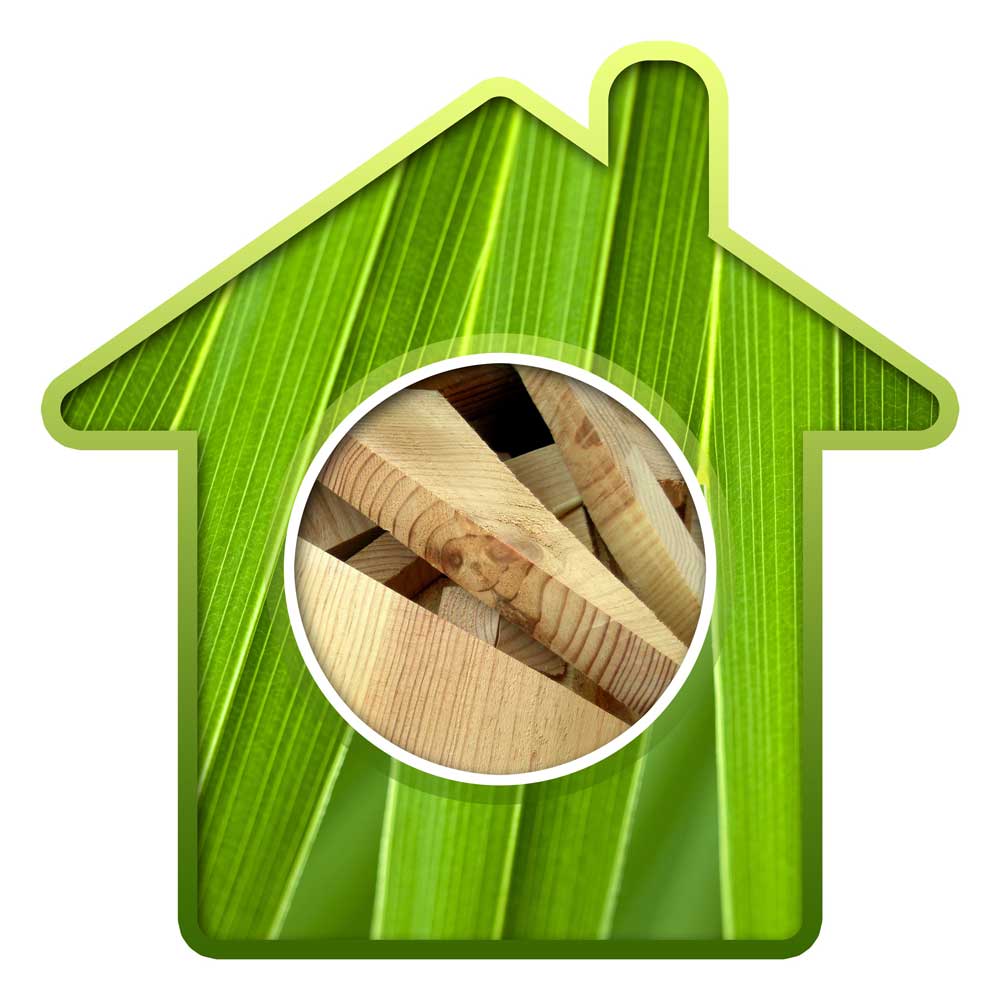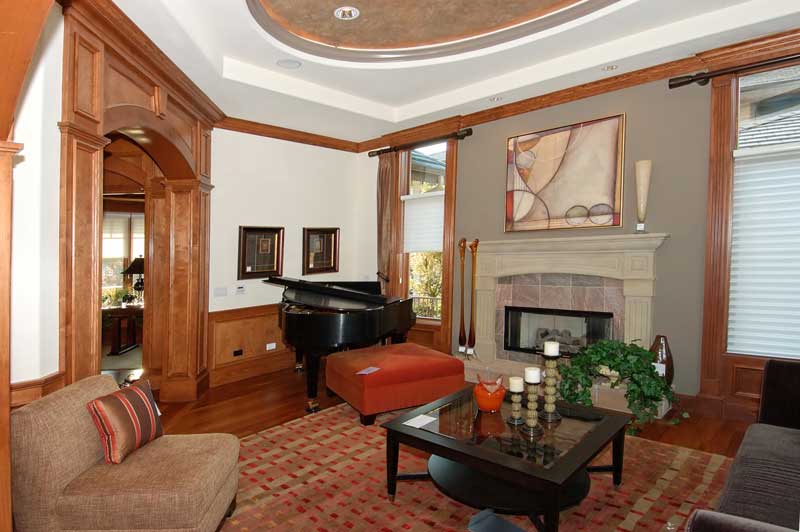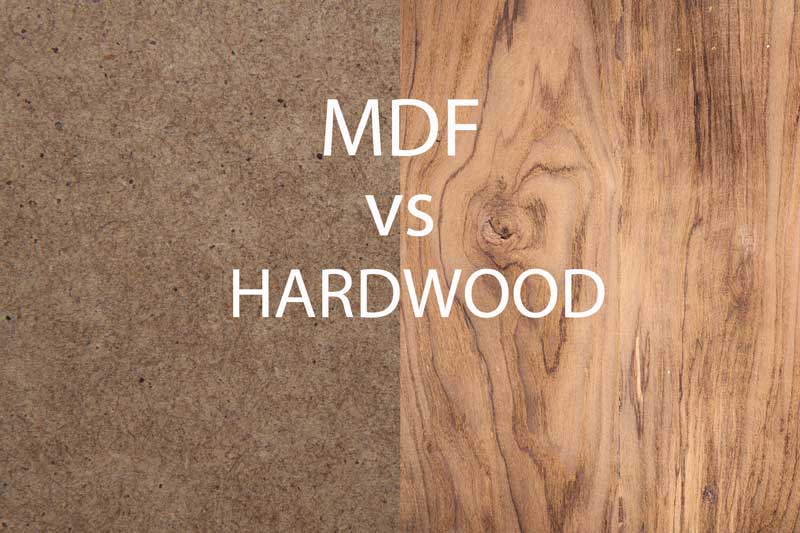Return To Blog
Why Choose Hardwood Moulding Over MDF?
Consider your investment along with environmental effects.
December 20, 2017
Until you begin the process of planning your remodel or build, you often don’t think of the options and weigh the benefits of one type of product versus another. When it comes to choosing the right type of moulding, businesses or homeowners would have the option of incorporating either MDF mouldings or solid hardwood mouldings. While you could determine your needs based solely on cost – this is not generally the smartest option for you, as most renovation or build projects have associated costs to consider long-term, like the durability of the product as an investment. Typically, hardwood offers many options for finishing - staining, clear coat finishes, or paint are possible. When using MDF, paint is the only option and is necessary in order for the product to be properly sealed. In addition, making a choice to use hardwood will expand your design and moulding profiles to an endless number of custom designs. MDF however, is usually only available in mass quantities of limited stocked profiles. To help you determine the right product for your needs, Sears Trostel can offer the benefits of hardwood and detriments of MDF along with our strong recommendation to use hardwood moulding in Denver for most construction projects

Generally sealing it with paint can help alleviate this issue, but won’t completely, and all MDF should be sealed and painted before installing to reduce the potential of these serious issues. MDF is not a sustainable product the way it is used now. It is usually not recyclable, so once used, it will remain in a landfill and continue to release these harmful chemicals, which can have adverse effects over time. Most wood products have some formaldehyde in then, but hardwood will not come with any added formaldehyde, so in terms of satisfying an environmental responsibility, MDF is not your best option.
Â
If you have pets, it is a much smarter choice in terms of your investment to choose hardwood over MDF. Unintentional scratches will always happen, especially with children or animals, and knowing that your investment is safe from everyday use and occasional accidents can offer great peace of mind when making the decision to use hardwood. While generally more expensive than MDF, hardwood moulding will always last longer, in better condition, proving to be worth the investment years down the road. Above all, hardwood is going to look more professional than MDF giving you rich looking trim for years to come.
Â
If you are leaning toward using MDF in your construction project, consider talking to the experts at Sears Trostel before making your purchases. Our team can help walk through the potential outcomes for your space and weigh in environmental factors that may have an effect on things over time. Our team is well-versed in all things regarding mouldings and can direct you toward your best options across the board.
Â
Looking for more specific information? Read more about the types of moulding we offer and the many varieties available to you. Because we are the leaders in Colorado millwork, we can assist in producing the right solutions for your renovation, remodel, new construction project, or commercial build.
Â
Contact our team today to get started and truly understand the benefits or detriments of the materials you intend on using. From moulding to furniture, Sears Trostel can provide unique materials of the highest quality, with the service to match.
Environmental Impact
MDF (medium-density fiberboard) is similar to particle board in a way, because instead of a solid piece, it is formed out of many fine fibrous pieces of wood bound into one. Most people would automatically think that this would be environmentally sound, as it can use wood waste, but the chemicals used in the binding process are actually quite harmful. Typically resin and formaldehyde is used in the binding process, which is known to be a carcinogen. Formaldehyde has a chemical reaction that results in continuous gassing-off for lengthy periods of time – months, or even years.
Generally sealing it with paint can help alleviate this issue, but won’t completely, and all MDF should be sealed and painted before installing to reduce the potential of these serious issues. MDF is not a sustainable product the way it is used now. It is usually not recyclable, so once used, it will remain in a landfill and continue to release these harmful chemicals, which can have adverse effects over time. Most wood products have some formaldehyde in then, but hardwood will not come with any added formaldehyde, so in terms of satisfying an environmental responsibility, MDF is not your best option.
Installation Issues with MDF
The base structure of MDF can seem strong and solid, but typically will not be as strong as solid hardwood mouldings. Woodworkers and installers have to be very careful when cutting MDF as it quickly dulls the blade, and can cause your miter saws to run into issues getting a clean cut.  Perfectionists will not be all too keen on the final look or the installation process, as MDF often buckles or creates a indention when nailed into, which looks messy and is much more difficult to fix then dealing with hardwoods. More sanding and filling is usually required for MDF installations, as well as a lot more cleanup in the dust department. Because MDF is made of fibers – basically a lot of fine wood fibers glued together – the resulting dust from sanding is increased by the simple nature of the product. It can take many attempts to install MDF moulding professionally, without any bumps, warping, misalignment, splits or non-smooth surface, which really contributes to more waste in the process as well.Durability of MDF vs Hardwood
Probably the most important and easily measured benefit of using hardwood moulding over medium-density fiberboard is its wear and tear over time. Solid wood is much more durable and lasting than MDF in many ways. The natural fibers in hardwood provide a more lasting hold on nails and other fasteners as opposed to MDF, which typically loosen after installation and over time. MDF moulding is not water resistant and typically will swell in size when introduced to water or humidity, so in this Colorado climate, your investment could easily be ruined by water alone. General durability also becomes an issue with scratching, chipping, or denting – the material is less dense than most hardwoods, so it is easy to look worn and old in a short span of time without taking a lot of care in maintenance and protection. Hardwood moulding tends to be a lot more resilient in terms of durability – its hardness allows for a lot of wear and tear before it becomes noticeable, and beyond that, can typically be refinished to look like new over time.Â

If you have pets, it is a much smarter choice in terms of your investment to choose hardwood over MDF. Unintentional scratches will always happen, especially with children or animals, and knowing that your investment is safe from everyday use and occasional accidents can offer great peace of mind when making the decision to use hardwood. While generally more expensive than MDF, hardwood moulding will always last longer, in better condition, proving to be worth the investment years down the road. Above all, hardwood is going to look more professional than MDF giving you rich looking trim for years to come.
Which is Right for You?Â
While the benefits of hardwood moulding heavily outweigh the positive aspects of MDF, as every project has different requirements and your needs may change over time. Consider working with hardwood to save yourself a headache down the road – we recommend using hardwood for most installations. Although MDF is cheaper in terms of cost, that cheap quality is passed along to the product itself. While MDF is easily dented, can crumble easily when drilling or nailing in close proximity, and not environmentally-friendly, it can provide a low-cost solution for projects that don’t require high quality or lasting durability.Â
If you are leaning toward using MDF in your construction project, consider talking to the experts at Sears Trostel before making your purchases. Our team can help walk through the potential outcomes for your space and weigh in environmental factors that may have an effect on things over time. Our team is well-versed in all things regarding mouldings and can direct you toward your best options across the board.
Â
Looking for more specific information? Read more about the types of moulding we offer and the many varieties available to you. Because we are the leaders in Colorado millwork, we can assist in producing the right solutions for your renovation, remodel, new construction project, or commercial build.
Â
Contact our team today to get started and truly understand the benefits or detriments of the materials you intend on using. From moulding to furniture, Sears Trostel can provide unique materials of the highest quality, with the service to match.
